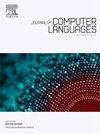Effects of specifying robotic missions in behavior trees and state machines
IF 1.8
3区 计算机科学
Q3 COMPUTER SCIENCE, SOFTWARE ENGINEERING
引用次数: 0
Abstract
The task of defining the robot’s mission is moving from professional developers and roboticists to the end-users. Robot missions, traditionally implemented in source code with text-based programming languages, present challenges for non-programmers. To this end, many domain-specific languages (DSLs) have been established in robotics. They are typically built upon an established paradigm, where behavior trees and state machines have become the most popular ones in robotics. These paradigms offer different levels of abstraction and control structures, which promise to improve the comprehension, correctness, and usability of missions. However, so far, there are no evaluation and validation studies to determine the effects of using either paradigm for mission specification by end-users. We present a controlled experiment on the effectiveness and efficiency of these paradigms for specifying robot missions by end-users. It measures mission comprehension, correctness and usability by examining language constructs, documentation, and usage. Our findings indicate that participants rated both paradigms above the neutral midpoint that is, greater than three on a 5-point scale in comprehension, with negligible variance in preference. However, state machine received marginally higher ratings in overall usability. The results further indicate that in the concrete syntax of the DSLs used in the experiments, user interfaces need improvement, more tutorials (including videos/audios) are required. End-users also need basic training in behavior trees, state machines, programming, and robotics. While the DSLs provide reasonable abstraction compared to text-based languages, further refinement is needed to enhance usability and correctness. We discuss actionable insights for improving the usability of behavior trees and state machines in robotics and automation.

在行为树和状态机中指定机器人任务的效果
定义机器人任务的任务正从专业开发人员和机器人专家转移到最终用户。机器人任务传统上是用基于文本的编程语言在源代码中实现的,这对非程序员来说是一个挑战。为此,在机器人技术中建立了许多领域特定语言(dsl)。它们通常建立在已建立的范例之上,其中行为树和状态机已成为机器人技术中最流行的范例。这些范例提供了不同层次的抽象和控制结构,有望提高任务的理解、正确性和可用性。然而,到目前为止,还没有评价和验证研究来确定最终用户在任务规范中使用任何一种范式的影响。我们提出了一个控制实验,对这些范例的有效性和效率的最终用户指定机器人的任务。它通过检查语言结构、文档和用法来度量任务理解、正确性和可用性。我们的研究结果表明,参与者对这两种范式的评价都高于中性中点,即在理解的5分制中大于3分,偏好的差异可以忽略不计。然而,状态机在总体可用性方面获得了稍高的评级。结果进一步表明,在实验中使用的dsl的具体语法中,用户界面需要改进,需要更多的教程(包括视频/音频)。终端用户还需要在行为树、状态机、编程和机器人方面进行基本培训。虽然与基于文本的语言相比,dsl提供了合理的抽象,但需要进一步细化以增强可用性和正确性。我们讨论了在机器人和自动化中提高行为树和状态机可用性的可行见解。
本文章由计算机程序翻译,如有差异,请以英文原文为准。
求助全文
约1分钟内获得全文
求助全文
来源期刊

Journal of Computer Languages
Computer Science-Computer Networks and Communications
CiteScore
5.00
自引率
13.60%
发文量
36
 求助内容:
求助内容: 应助结果提醒方式:
应助结果提醒方式:


